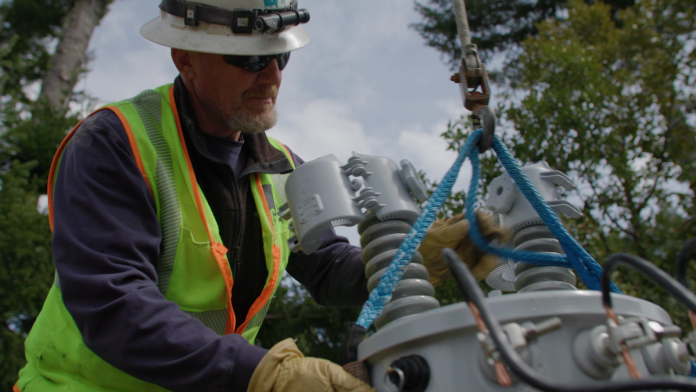PG&E shares California’s ambitious housing and climate goals.
We’re working every day to improve our new-service connections processes in our North Valley and Sierra Region to ensure that the 785,000 electric customers we serve in the region have the homes and the new and expanding businesses they need to benefit from economic growth and the decarbonization of our economy for a clean energy future.
In our North Valley and Sierra Region, through October 2025, our Service Planning & Design team completed nearly 1,500 new-service connections, including:
- 798 residential projects
- 208 commercial projects
- 135 agriculture projects
- 58 EV charging points
We’re achieving our new business goals in several ways, including through builder workshops, a dedicated Customer Experience team and using new technologies to work smarter.
Workshop keeps region’s customers in the loop
Nearly 50 home builders, general contractors and others attended a California Building Industry Association-PG&E workshop at PG&E’s West Sacramento Resource Management Center earlier this year. There to listen—and help—were PG&E coworkers from teams including Service Planning & Design, Permitting, Land, Inspections and Solar Interconnection.
The goal was to help building industry customers understand the new-service process, and to get feedback on how PG&E could continue to improve new-service connections.
Mike LaFortune, vice president of land acquisition and development at Woodside Homes in Folsom, called the workshop “a significant milestone” in the two-year collaboration between the California Building Industry Association and PG&E to improve new-service connections.
“This is a great opportunity to share and engage with PG&E,” he told attendees. “We’ve opened up communication to explain what we need and to learn what PG&E needs, and to find solutions.”
Jeff Short, director of government and public affairs for the North State Building Industry Association, said many of his group’s members have told him the workshop was a positive experience. Not only do they now better understand PG&E’s new-service processes and timelines, but they’re building “helpful relationships” with the company.
Customer Experience team tailors process to needs
Service Planning & Design also launched a new Customer Experience team in 2025 to focus on improving customer service at every stage of the new-service process.
The team has built engagement models for specific industries and project types, including:
- Electric-vehicle charging
- Telecommunications
- Government agencies
- Short-cycle energization, including disconnects, reconnects and projects facing energy code-related permit rejections or fines
- High-tech, industrial and large national accounts
- Residential and commercial developers
The goal is to tailor the new-business experience to industries’ specific needs.
Customers say they’ve noticed the change.
In the telecommunications industry, for example, customers recently ranked their PG&E Service Planning & Design experience a 9.4 out of 10 on average in company surveys. That included a 9.1 out of 10 for ease of doing business, and a 9 out of 10 for being enjoyable to do business with.
In fact, 88% of telecommunications customers gave PG&E a 9 or a 10 out of 10 for overall satisfaction in their surveys.
New technology helps reps work smarter
Service Planning & Design has enlisted new technologies in 2025 to help new-service customers.
The team launched its AI Companion in August to help new-business representatives more quickly answer customer questions and prepare for projects. Helping reps find faster answers leaves more time for hands-on customer service and proactive project management.
The team also developed an online Project Tracker that notifies customers as their job moves through the major phases of new service, from application to completion.
Like the AI Companion, the Project Tracker helps reps work efficiently so that they can focus on moving projects forward.
And a new Work Plan Calculator keeps project stakeholders informed on target dates.
Faster connections, smaller backlogs
From workshops to new technology, new-service improvements have paid off in faster connections and streamlined processes.
PG&E’s six-month design backlog of early 2023 is now less than a month systemwide. The company energized nearly 14,000 new service customers in 2024, up roughly 40% from 9,800 connections in 2023.
Most importantly, PG&E is on track to meet new state energization timelines.
In 2023, following a post-pandemic supply-chain crisis and a series of historic storms that diverted crews to system repairs, the company had thousands of customers ready and waiting for power. As of October 2025, that number is below 500 customers systemwide.
We’re excited about our incredible progress in 2025, and we look forward to continuing to work with our customers and stakeholders on additional improvements to our new-service processes in 2026.







